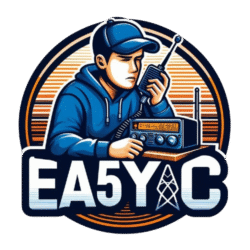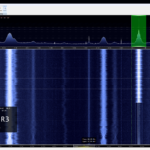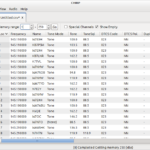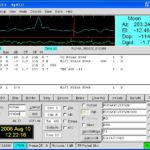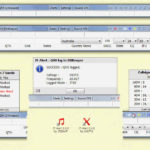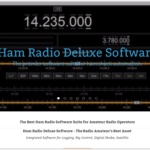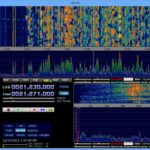FT8 and FT4 decoders optimized
What is JTDX?
JTDX means "JT,T10 and FT8 modes for DXing", it is being developed with main focus on the sensitivity and decoding efficiency, both, in overcrowded and half empty HF band conditions.
It is modified WSJT-X software forked from WSJT-X r6462.
JTDX supports JT9, JT65, T10 and FT8 © digital modes for HF amateur radio communication, focused on DXing and being shaped by community of DXers.
© 2016-2017 by Igor Chernikov, UA3DJY and Arvo Järve ES1JA
La radio definida por software (SDR, por sus siglas en inglés) es un sistema de comunicación por radio en el que los componentes que se implementaron normalmente en el hardware (por ejemplo, mezcladores, filtros, amplificadores, moduladores / demoduladores, detectores, etc.) se implementan por medio del software en una computadora personal o sistema Integrado.
CHIRP se distribuye como una serie de compilaciones generadas automáticamente. Cada vez que hacemos un cambio a CHIRP, se crea una compilación para el día siguiente. Por lo tanto, CHIRP está versionado por la fecha en que se creó, lo que facilita determinar si tiene una versión anterior. No ponemos objetos experimentales en CHIRP antes de que estén listos, excepto cuando se indique específicamente con una advertencia. Por lo tanto, no necesita preocuparse por encontrar una versión estable para ejecutar. Siempre debes estar en la última versión disponible.
WSJT-X implements communication protocols or "modes" called FT8, JT4, JT9, JT65, QRA64, ISCAT, MSK144, and WSPR, as well as one called Echo for detecting and measuring your own radio signals reflected from the Moon. These modes were all designed for making reliable, confirmed QSOs under extreme weak-signal conditions.
JT4, JT9, JT65, and QRA64 use nearly identical message structure and source encoding (the efficient compression of standard messages used for minimal QSOs). They use timed 60-second T/R sequences synchronized with UTC. JT65 and QRA64 were designed for EME ("moonbounce") on the VHF/UHF bands; JT65 has also proved popular and effective for worldwide QRP communication at HF. JT9 is optimized for the LF, MF, and HF bands. It is about 2 dB more sensitive than JT65 while using less than 10% of the bandwidth. With either JT9 or JT65, world-wide QSOs are possible with power levels of a few watts and compromise antennas. JT4 and QRA64 are optimized for EME on the VHF and higher bands, and especially the microwave bands from 2.3 to 24 GHz.
FT8 is operationally similar but uses T/R cycles only 15 s long. MSK144 is designed for Meteor Scatter on the VHF bands. These modes offer enhanced message formats with support for nonstandard callsigns and some popular contests.
As described more fully on its own page, WSPR mode implements a protocol designed for probing potential propagation paths with low-power transmissions. WSPR is now fully implemented within WSJT-X, including programmable "band-hopping".
JTAlert
Audio and Visual alerts for WSJT-X & JT65-HF
The Best Ham Radio Software Suite for Amateur Radio Operators
Ham Radio Deluxe Software - The Radio Amateur's Best Asset
Integrated Software for Logging, Rig Control, Digital Modes, Satellite
HDSDR is a freeware Software Defined Radio (SDR) program for Microsoft Windows 2000/XP/Vista/7/8/8.1/10.
Typical applications are Radio listening, Ham Radio, SWL, Radio Astronomy, NDB-hunting and Spectrum analysis.
HDSDR (former WinradHD) is an advanced version of Winrad, written by Alberto di Bene (I2PHD).
